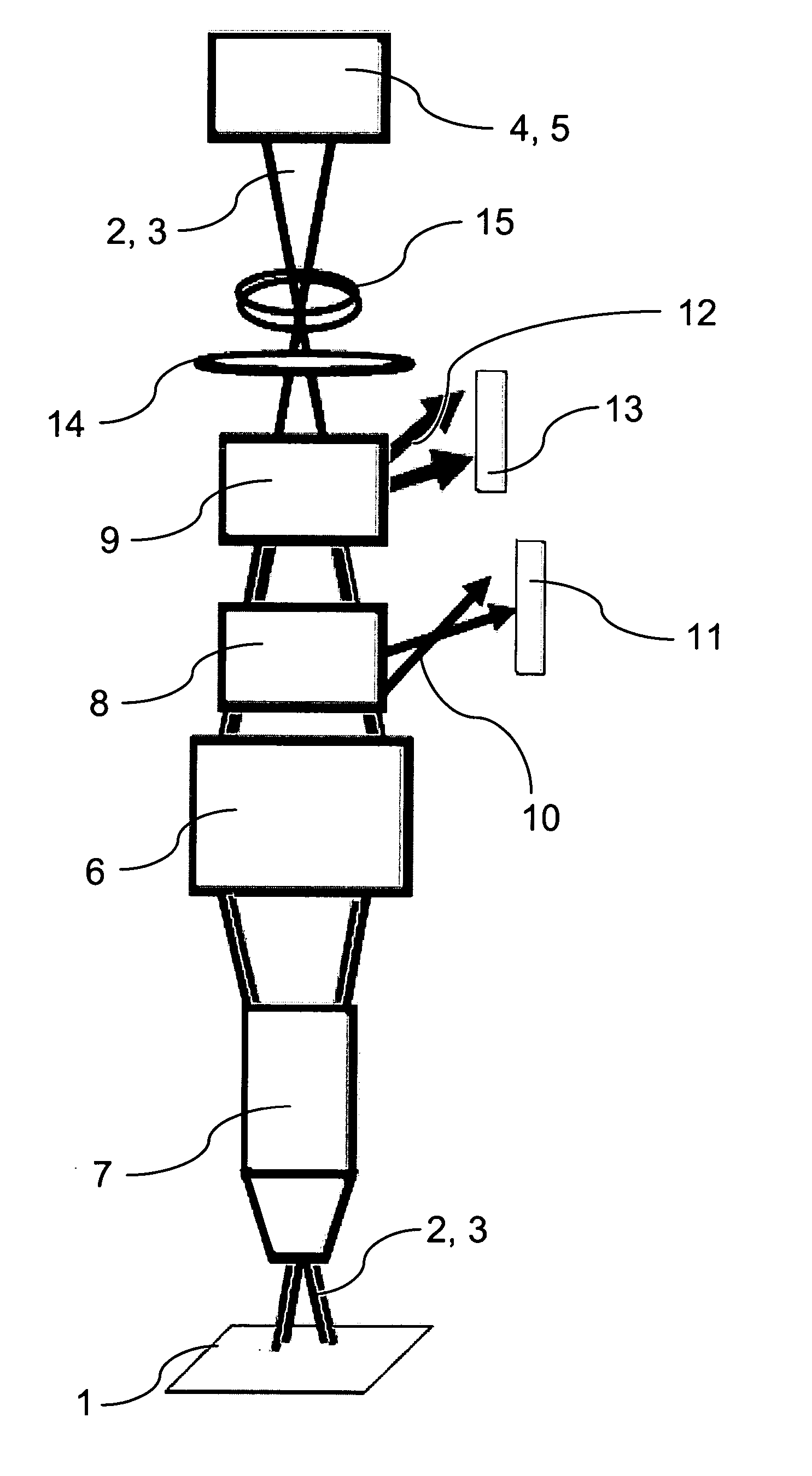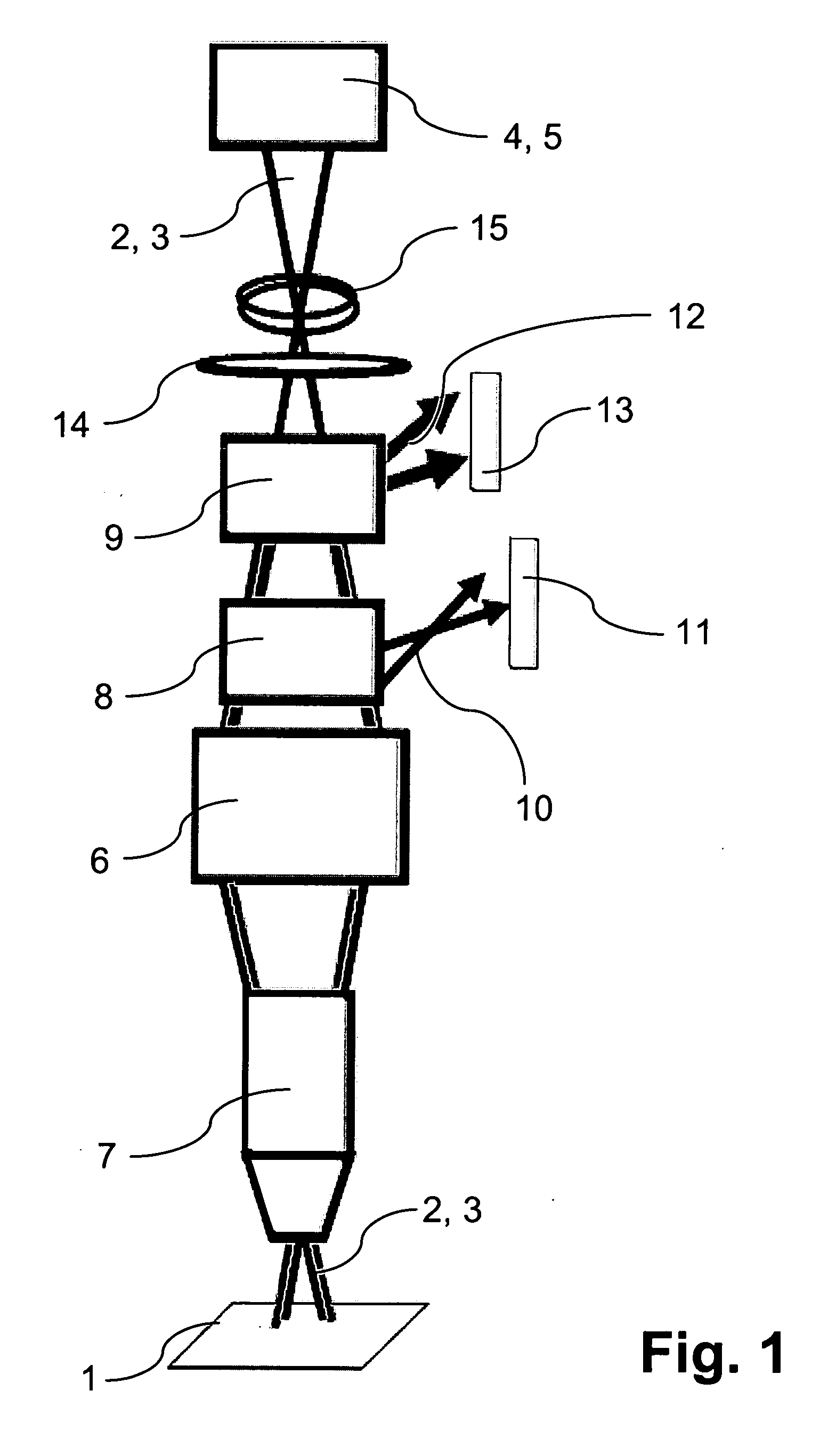Microscope
a microscope and microscope technology, applied in the field of microscopes, can solve the problems of destroying the detector, generating high-intensity radiation in the specimen being examined, and too much radiation striking the detector to be processed by the detector, so as to avoid the negative impact of the detector
- Summary
- Abstract
- Description
- Claims
- Application Information
AI Technical Summary
Benefits of technology
Problems solved by technology
Method used
Image
Examples
Embodiment Construction
[0023] The Figure schematically shows the general construction of an exemplifying embodiment of a microscope according to the present invention. Detected light 2 proceeding from specimen 1 is guided along a detection beam path 3 to a detector 5 embodied as a photomultiplier 4. The illuminating light is guided along an illumination beam path, via a beam splitter 6 and an objective 7, onto specimen 1. Detected light 2 travels through objective 7 and beam splitter 6 in the reverse order.
[0024] Two controllable elements for regulating and / or limiting the light power level in detection beam path 3 are arranged in front of photomultiplier 4 in detection beam path 3. In the exemplifying embodiment illustrated, these are an AOTF 8 and an AOM 9.
[0025] AOTF 8 is traversed by an acoustic wave that is generated by a piezoacoustic generator activated by a high-frequency source. By modifying the frequency of the waves traveling through AOTF 8, AOTF 8 can be switched in such a way that certain w...
PUM
 Login to View More
Login to View More Abstract
Description
Claims
Application Information
 Login to View More
Login to View More - R&D
- Intellectual Property
- Life Sciences
- Materials
- Tech Scout
- Unparalleled Data Quality
- Higher Quality Content
- 60% Fewer Hallucinations
Browse by: Latest US Patents, China's latest patents, Technical Efficacy Thesaurus, Application Domain, Technology Topic, Popular Technical Reports.
© 2025 PatSnap. All rights reserved.Legal|Privacy policy|Modern Slavery Act Transparency Statement|Sitemap|About US| Contact US: help@patsnap.com


